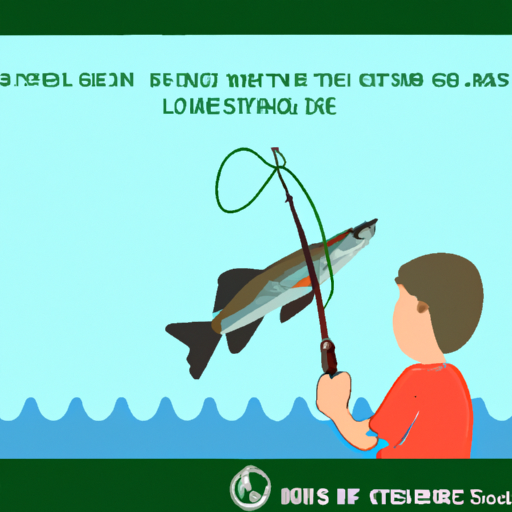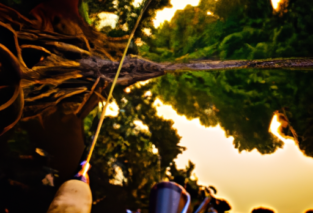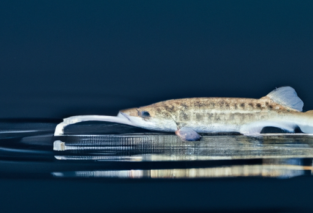Are you an aspiring angler looking to cast your line into the world of fishing? Look no further! Our product, “A Step-by-Step Guide to Getting Your First Fishing License,” is your ultimate companion to help you navigate the process of obtaining your very first fishing license. Packed with easy-to-follow instructions and helpful tips, this guide will walk you through each step, ensuring that you have all the necessary permits and knowledge required to enjoy the joys of fishing legally. So, grab your rod and get ready to embark on your fishing journey with confidence and peace of mind!

1. Determine the Requirements for Obtaining a Fishing License
1.1 Check the State or Province Fishing Regulations
Before you begin the process of obtaining a fishing license, it is crucial to familiarize yourself with the fishing regulations in your state or province. Different areas may have specific rules and restrictions when it comes to fishing, including bag limits, catch and release policies, and seasonal fishing hours. By checking the fishing regulations, you’ll ensure that you are well-informed and can comply with all the necessary requirements.
1.2 Determine the Eligibility and Age Requirements
Once you understand the fishing regulations in your area, it’s important to determine your eligibility and the age requirements for obtaining a fishing license. In most cases, anyone above a certain age, typically 16 years old, is required to have a valid fishing license. However, some states may have different age restrictions, so make sure to check the specific regulations for your area.
1.3 Research the Cost of a Fishing License
The cost of a fishing license can vary depending on the state or province you reside in. It is essential to research the fees associated with obtaining a fishing license. The fees may vary depending on factors such as the duration of the license, the type of fishing (freshwater or saltwater), and whether you qualify for any discounted rates, such as a senior or disabled fishing license.
1.4 Find Out Where to Apply for a Fishing License
Once you have determined the requirements and cost of a fishing license, the next step is to find out where and how to apply for one. Most states and provinces offer multiple options for applying, including online applications, in-person applications at designated offices or retailers, and mail-in applications. Ensure you understand the available methods and choose the one that is most convenient for you.
2. Gather the Necessary Documentation
2.1 Identification Requirements
When applying for a fishing license, you will typically need to provide identification to prove your identity. Acceptable forms of identification may include a driver’s license, passport, or state-issued identification card. Ensure that you have a valid and current form of identification before starting the application process.
2.2 Proof of Residency
In addition to identification, you may also need to provide proof of residency to obtain a fishing license. This proof could include a utility bill, a rental agreement, or a valid voter registration card. Make sure to gather the required documentation to establish your residency, as this may be a necessary requirement for obtaining your fishing license.
2.3 Additional Documentation (if applicable)
Depending on your specific circumstances, there may be other documentation requirements to consider. For example, if you are applying for a senior or disabled fishing license, you may need to provide proof of age or disability. It’s important to research any additional documentation requirements that may apply to you and make sure to have them ready when applying for your fishing license.
3. Decide on the Type of Fishing License
3.1 Freshwater Fishing License
If you plan to fish in freshwater areas such as lakes, rivers, or ponds, you will need to obtain a freshwater fishing license. This license allows you to fish in bodies of water that are not connected to the ocean. Make sure to choose this type of license if your fishing activities are limited to freshwater locations.
3.2 Saltwater Fishing License
For those interested in fishing in saltwater areas, such as coastal regions or the open ocean, a saltwater fishing license is required. This license grants you permission to fish in saltwater bodies, targeting species that inhabit these environments. If your fishing adventures involve saltwater fishing, be sure to select this specific license type.
3.3 Combination License
In some cases, individuals may wish to fish in both freshwater and saltwater locations. If this is the case for you, consider obtaining a combination license that allows you to fish in both types of environments. This license is convenient for anglers who enjoy exploring a variety of fishing spots and targeting different species.
3.4 Senior or Disabled Fishing License
Certain states offer senior or disabled fishing licenses, which provide discounted rates or exemptions for individuals who meet specific criteria. These licenses are designed to make fishing more accessible and affordable for seniors or persons with disabilities. If you qualify for these special licenses, be sure to consider them when deciding on the type of fishing license you need.
4. Determine the Duration of the Fishing License
4.1 Annual Fishing License
An annual fishing license grants you the right to fish for a full year from the date of purchase. This license is ideal for individuals who engage in fishing activities regularly and plan to fish throughout the year. It offers convenience and ensures that you can enjoy fishing without the need for frequent renewals.
4.2 Short-Term Fishing License
If you’re not an avid angler and prefer occasional fishing trips, a short-term fishing license may be the best option for you. This type of license typically allows you to fish for a specified period, such as a day, a week, or a month. Short-term licenses are flexible and cost-effective, making them suitable for occasional fishing enthusiasts.
4.3 Lifetime Fishing License
For passionate anglers who plan to fish for a lifetime, a lifetime fishing license is an excellent investment. As the name suggests, this type of license remains valid for the duration of the angler’s life. While the upfront cost of a lifetime license may be higher than other options, it ensures that you will never need to worry about renewals again.

5. Choose the Method of Application
5.1 Online Application
Applying for a fishing license online is a convenient and efficient option for many individuals. Most states and provinces offer online application systems that allow you to complete the process from the comfort of your home. Online applications typically require you to fill out the necessary information, submit any required documentation electronically, and make the necessary payment.
5.2 In-Person Application
If you prefer a more personal approach or have questions regarding the application process, you can choose to apply for a fishing license in person. Many designated offices or retailers offer in-person application services. This option allows you to speak directly with a representative who can guide you through the application and address any concerns you may have.
5.3 Mail-In Application
For individuals who prefer traditional methods, some states still offer the option to apply for a fishing license through mail-in applications. This method involves downloading and filling out the application form, mailing it to the appropriate address along with any required documents, and including payment in the form of a check or money order. While this method may take longer to process, it provides a viable alternative for those who prefer paper-based applications.
6. Complete the Fishing License Application
6.1 Fill Out Personal Information
Regardless of the method you choose to apply for a fishing license, you will need to provide personal information on the application form. This information typically includes your full name, address, date of birth, and contact details. It’s important to double-check the accuracy of the information you provide to ensure a smooth application process.
6.2 Provide Identifying Details
In addition to personal information, the fishing license application may require you to provide specific identifying details. This could include your driver’s license number, passport number, or any other unique identifiers to confirm your identity. Make sure to have these details handy to ensure the completion of your application.
6.3 Select the Desired Fishing License Type
As previously discussed, selecting the appropriate fishing license type is crucial. Take your time to review the available options and choose the license type that aligns with your fishing preferences. If you’re unsure, you can consult with customer service representatives or experienced anglers who can provide guidance based on your specific needs.
6.4 Pay the Required Fees
Once you have completed the application form and selected the desired license type, you will need to pay the required fees. The cost will depend on factors such as the duration of the license, the type of fishing, and any applicable discounts. Ensure that you have the means to make the payment online, in person, or by mail-in, following the instructions provided.

7. Submit the Application
7.1 Online Submission
If you are applying for a fishing license online, the final step is to submit your completed application electronically. Review the application form to ensure that all information is accurate and legible. Some online systems may allow you to preview your application before submission. Submit the form as instructed, and retain any confirmation or reference numbers provided for future reference.
7.2 In-Person Submission
For in-person applications, bring your completed application form, along with any required documents, to the designated office or retailer. Hand your application package to a representative, who will review it for completeness and accuracy. They may ask you questions or request additional information if needed. Once your application is accepted, you will typically receive a receipt or acknowledgment of submission.
7.3 Mail-In Submission
If you choose to apply for a fishing license through mail-in, carefully package your completed application form and any required documents. Make sure to include the appropriate payment in the form of a check or money order. Address the envelope to the designated address provided on the application form, and consider using a trackable mailing service to ensure the safe delivery of your application.
8. Wait for Approval and Receipt of Fishing License
8.1 Processing Time
After submitting your application, it is necessary to allow adequate time for processing. The duration of the processing period may vary depending on the state or province and the time of year. Some applications may be processed within a few days, while others may take several weeks. It’s important to be patient during this time and avoid engaging in any fishing activities until you receive your fishing license.
8.2 Tracking the Application Status
If you are curious about the status of your fishing license application, check if there is a method to track its progress. Some online systems allow you to log in and view the status of your application, providing peace of mind and keeping you informed of any updates or additional requirements.
8.3 Accessing and Printing the Fishing License
Once your application is approved, you will receive your fishing license. This could be in the form of a physical card that will be mailed to you, or it may be available for download and printing from an online portal. If you receive a physical card, make sure to carry it with you whenever you go fishing to ensure compliance with fishing regulations.

9. Familiarize Yourself with Fishing Regulations and Rules
9.1 Learn the Bag and Possession Limits
To ensure responsible fishing practices, it’s essential to familiarize yourself with the bag and possession limits set by your state or province. Bag limits refer to the maximum number of a specific species that you are allowed to catch and keep in a single day or trip. Possession limits dictate the maximum number of fish you can have in your possession, whether fresh or preserved. Adhering to these limits helps preserve the fish population and maintains a sustainable environment for future generations.
9.2 Understand the Catch and Release Policies
Catch and release policies are essential methods for conserving fish populations. These policies encourage anglers to release certain fish species back into the water after catching them, rather than keeping them. Make sure to understand the specific catch and release rules for your area, including any size restrictions or prohibited species.
9.3 Follow Size and Species Restrictions
In addition to bag and possession limits, there may also be restrictions on the size and species of fish that you can catch and keep. These restrictions aim to protect vulnerable or undersized fish, allowing them to grow and reproduce. Take the time to familiarize yourself with the size and species restrictions in your region to ensure compliance with the regulations.
9.4 Know the Fishing Season and Hours
Fish species may have specific seasons or time periods during which they are protected, and fishing for them is restricted. It’s crucial to be aware of the fishing seasons and hours established by your state or province. By respecting these regulations, you contribute to the overall conservation efforts and maintain healthy fish populations.
10. Renewing or Upgrading Your Fishing License
10.1 Renewal Procedures
For those with annual fishing licenses, it is necessary to renew your license before it expires. Renewal procedures may vary depending on the state or province, but most offer online renewal options for convenience. Make sure to mark your calendar and initiate the renewal process in advance to avoid any gaps in your fishing privileges.
10.2 Upgrading to a Different License Type
If your fishing preferences change or you decide to explore different types of fishing, you may need to upgrade your current license to a different type. The process for upgrading typically involves contacting the licensing authority, providing the necessary documentation, and paying any additional fees. Determine the steps required for upgrading and follow the appropriate procedures to ensure you have the correct license for your new fishing activities.
10.3 Updating Personal Information
Life events and changes in personal information may require updates to your fishing license. Whether you change your name, address, or contact details, it’s important to notify the licensing authority to ensure the accuracy and validity of your fishing license. Contact the appropriate authorities and follow their guidelines for updating your personal information to avoid any complications or issues with your license.
As an aspiring angler, getting your first fishing license is an exciting step towards enjoying the wonderful world of fishing. By following these step-by-step guidelines, you’ll be well-prepared to navigate the process of obtaining your fishing license with ease. Remember to familiarize yourself with the fishing regulations, gather the necessary documentation, decide on the type and duration of your license, choose your preferred application method, and complete the application accurately. After submitting your application, patiently await its approval, and once you receive your fishing license, be sure to educate yourself on the rules and regulations to ensure responsible and enjoyable fishing experiences. Happy fishing!






